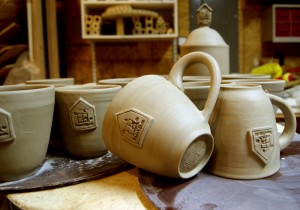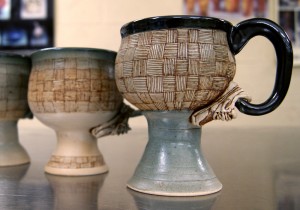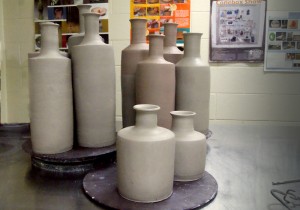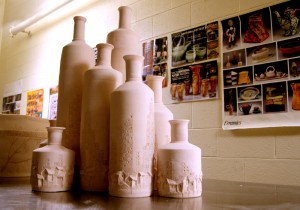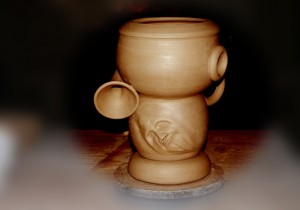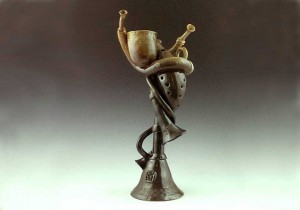 This year took a turn (no pun intended) to wheel-thrown pieces. That ‘turn’ is one I did not expect to take a full 12 months. Making functional wares is not my favorite thing to do, but the process is one that has deepened my respect for those who do this full time. Immersing myself into several hundred pounds of porcelain and stoneware also improved my skill level immensely. The exercise of making 300+ mugs (and improving along the way) alone became a challenge as well as significant time for personal reflection. There are clear signs that ‘production pottery’ is not a direction that suits me. I still trim the bottoms of my pots and I consistently texture the bottoms and imprint my initials…those actions take time. For some production potter friends, it is more time than they spend throwing and finishing a pot of the same size. I can’t seem to cut loose that fact…and am OK with that realization as well as the financial consequences.
This year took a turn (no pun intended) to wheel-thrown pieces. That ‘turn’ is one I did not expect to take a full 12 months. Making functional wares is not my favorite thing to do, but the process is one that has deepened my respect for those who do this full time. Immersing myself into several hundred pounds of porcelain and stoneware also improved my skill level immensely. The exercise of making 300+ mugs (and improving along the way) alone became a challenge as well as significant time for personal reflection. There are clear signs that ‘production pottery’ is not a direction that suits me. I still trim the bottoms of my pots and I consistently texture the bottoms and imprint my initials…those actions take time. For some production potter friends, it is more time than they spend throwing and finishing a pot of the same size. I can’t seem to cut loose that fact…and am OK with that realization as well as the financial consequences.
I am revisiting the sculptural aspect of clay. The hand-built MugPhlute image on this post is something that I made 2 years ago, but did not glaze fire until the end of 2013. The form did not seems to stand on its own and I was afraid to glaze it, knowing that multiple glaze firings would be risky with so many joins and varying clay thicknesses. Now that it is glazed, I think I can call it a completed sculpture with functional parts (a couple of horns and a ocarina). Even completed, I am having second thoughts…
Clay is such a plastic media and I love taking advantage of that plasticity. There is a point, however, where functional plasticity and clay gymnastics cross that I want to explore. The MugPhlute in this post crosses that line too far, methinks. If I had to create a Likert Scale that ranged from Pure Function to Sculptural Whimsy, this one falls off the end of the whimsical scale. Somewhere in the middle of that scale is a point where function is implied and sculpture re-enforces the implied functionality…the piece is still true to its functional roots but stands on its own merit as an artful sculpture. Although I cannot put my finger on it, my thoughts lean toward religious icons from a number of past civilizations where pieces possess middle-ground qualities of functional narrative and figurative sculpture, simultaneously.
It may be back-to-ocarina building time for me. It may also be back-to-figurative sculpture time. Maybe I can train my wheel to take some of those functional, basic forms and get to that not-so-basic middle-ground world. Or maybe, I should simply take less allergy medication (having just re-read what I wrote above) *grin*.
